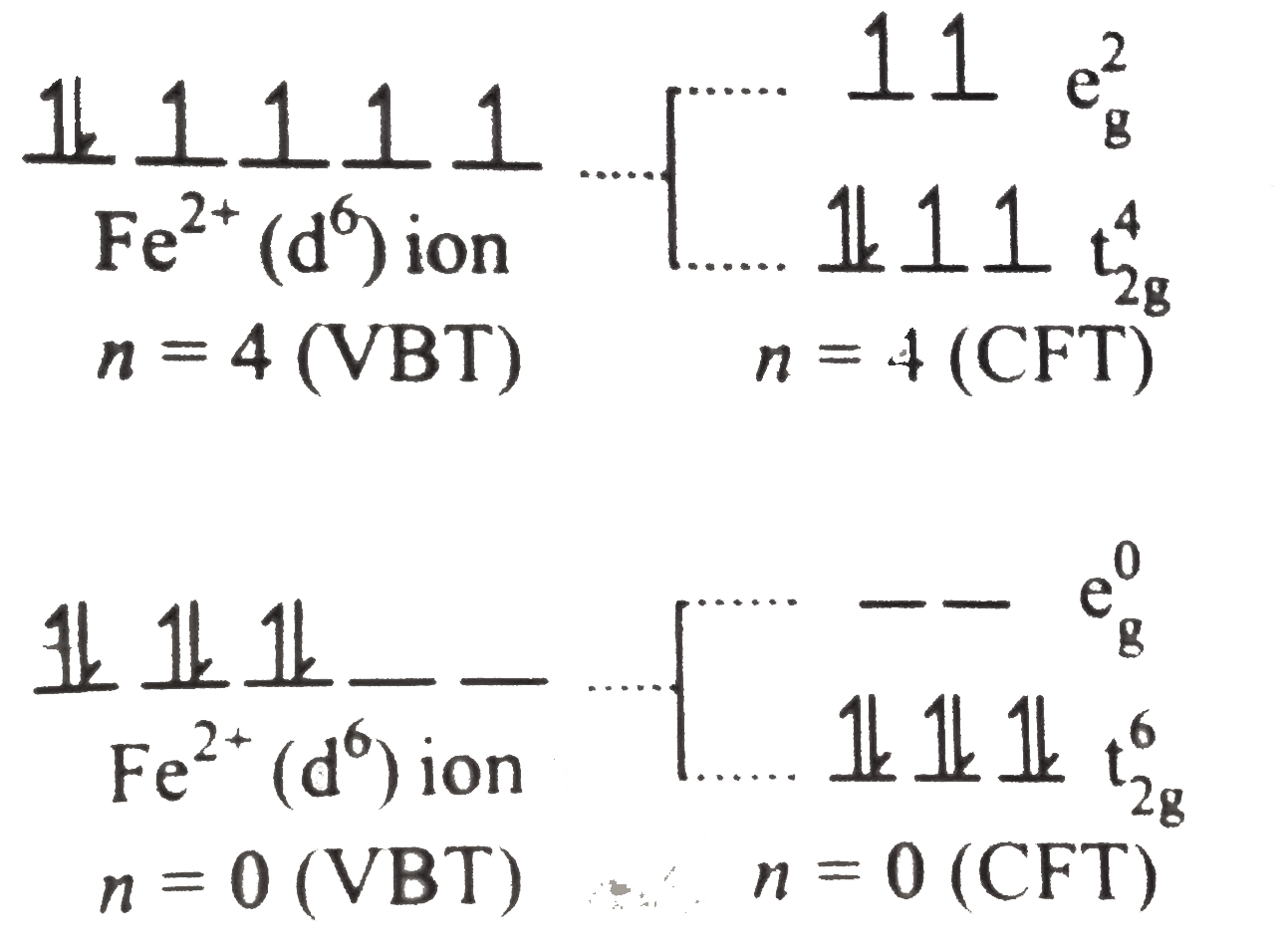A complex of a certain metal ion has a magnetic moment of 4.90BM Another complex of the same metal ion in the same oxidation state has zero magnetic moment The central metal ion could be which of the following (a) Cr3+ ,(b) Mn3+ (c ) Fe2+ (d) Co2+
(ii) Refer to the question above if a metal ion has complex ion and with magnetic moments 4.90 and 2.8BM which one of these is the central metal ion
(a) Cr3+ (b) Mn3+ , (c ) Fe2+ (d) Co2+ .
Video Solution
Text Solution
μ=4.90B.M corresponds to n=4 which corresponds d6 configuration In a weak field ligands d6 configuration will have 4 unpaired electrons In strong field ligands d6 configuration will have no unpaired electrons with zero magntic moment value Fe2 have 3d6 configuration In weak field ligands
 (b) μ=4.9BM corresponds to n=4 and for μ=2.80BM corresponds to n=2
(b) μ=4.9BM corresponds to n=4 and for μ=2.80BM corresponds to n=2
For d4 configuration in a weak field ligands it will have 4 unpaired electrons In strong field ligands d4 configuration will have one paired electrons and two upaireed electrons
Note d1 to d3 configuration no pairing will occur whether the ligand field is weak or strong But for d configuration only one pairing will occur in strong field ligands
Therefor Mn3+ have 3d4 configuration In weak field ligands
 .
.
|
Topper's Solved these Questions
- COORDINATION COMPOUNDSBOOK - CENGAGE CHEMISTRYCHAPTER - COORDINATION COMPOUNDSEXERCISE - Ex 7.1 Subjective (Terminology)
5 Videos
- COORDINATION COMPOUNDSBOOK - CENGAGE CHEMISTRYCHAPTER - COORDINATION COMPOUNDSEXERCISE - Ex 7.1 Subjective (Effective Atomic Number (Ean))
3 Videos
- COORDINATION COMPOUNDSBOOK - CENGAGE CHEMISTRYCHAPTER - COORDINATION COMPOUNDSEXERCISE - Archives Subjective
18 Videos
- CHEMICAL KINETICSBOOK - CENGAGE CHEMISTRYCHAPTER - CHEMICAL KINETICSEXERCISE - Archives Subjective
23 Videos
- D AND F BLOCK ELEMENTSBOOK - CENGAGE CHEMISTRYCHAPTER - D AND F BLOCK ELEMENTSEXERCISE - Archives Subjective
29 Videos
Similar Questions
Knowledge Check
A complex of a certain metal ion has a magnetic moment of 4.90 BM, another complex of the same metal in the same oxidation state has a zero magnetic moment. The central metal ion could be
ACr(III)BMn(II)CFe(III)DFe(II)A complex of certain metal has the magnetic moment of 4.91 BM whereas another complex of the same metal with same oxidation state has zero magnetic moment. The metal ion could be :
ACo2+BMn2+CFe2+DFe3+A complex of certain metal has the magnetic moment of 4.91 BM whereas another complex of the same metal with same oxidation state has zero magnetic moment. The metal ion could be :
ACo2+BMn2+CFe2+DFe3+
In which of the following complexes the metal ion is in zero oxidation state?
View SolutionWhich ion has the highest magnetic moment value ?
View SolutionWhich of the following ions has the least magnetic moment?
View SolutionThe transition metal ion that has 'spin -only ' magnetic moment value of 5.96 is
View SolutionConsider that a d6 metal ion (M2+) forms a complex with aqua ligands , and the spin only magnetic moment of the complex is 4.90 BM . The geometry and the crystal field stabilization energy of the complex is :
View Solution
